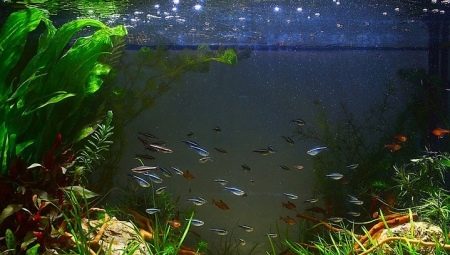Each aquarist periodically faces the need to restart the aquarium. The frequency of this process depends on the displacement of the water system. The larger its volume, the less often it has to be done. How to do everything right, avoiding mistakes and preserving the health of fish, plants and other inhabitants? The one who does this for the first time, probably asks himself this question. Here there are subtleties and secrets that will be useful to learn.

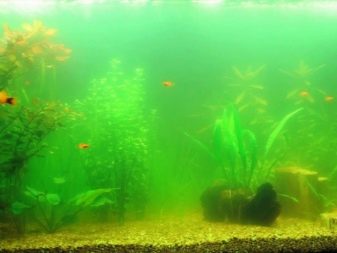
Reasons to restart
Several factors may precede an aquarium’s operation:
- sharp turbidity of the water, overgrowing of the walls with algae, lack of changes during water change;
- acidification of the soil, accompanied by a characteristic unpleasant odor;
- disease or death of fish or plants;
- desire to change the internal design;
- the inhabitants in the aquarium became crowded;
- mechanical damage to the container.
Each of the reasons has its own subtleties of elimination, which should be adhered to in order to achieve a positive result. But there is also a general algorithm of actions, which, when performed, will easily eliminate the problem.
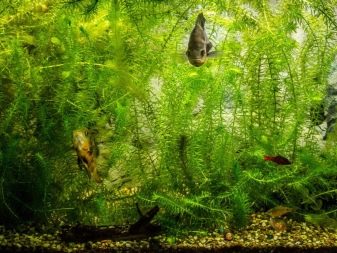
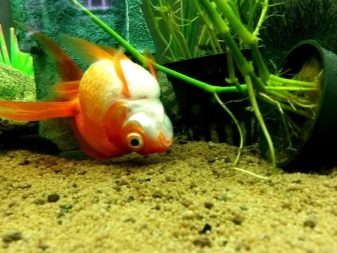
Where to begin
You need to start at least a week from harvesting the required amount of standing water. It will be needed for temporary overexposure of fish, and to replace drained liquid. When water supplies are done, you can start the restart process.
Before draining the water, you need to remove all electrical appliances: temperature regulator, filter, aerator, etc. Then transfer the fish and other inhabitants of the aquarium to any container suitable for this purpose. To make it easier to catch fish and other aquatic creatures, it is recommended to drain a certain amount of liquid immediately.
If the aquarium is restarted for technical reasons or in order to expand the space, some of the water must be saved. It is useful for the speedy creation of a favorable biological balance.
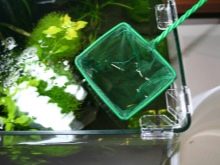
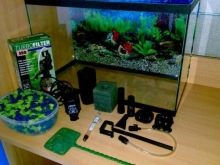
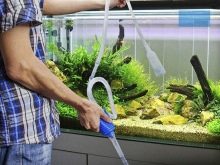
After all the animals have been relocated, vegetation and decor elements should be removed. Now you can drain the remaining water and remove the soil. Drainage is made through a hose with a funnel on it. Then you need to wash the empty aquarium thoroughly.

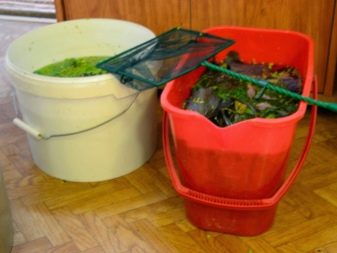
Nuances of washing the tank
Being in a private house, especially in the summer, it will be easier to do. But, as you know, for a purposeful aquarist there are no barriers. And that means that washing a 100-liter aquarium in a small bathroom is a feasible task.
Wash the container with hot water using a soft cloth or sponge. The use of any chemical compounds is undesirable. In most cases, the walls of the aquarium are easily cleaned of plaque and dirt.
If a simple wash did not give the desired result, you can use baking soda. After cleaning, thoroughly rinse the surface at least 3 times.
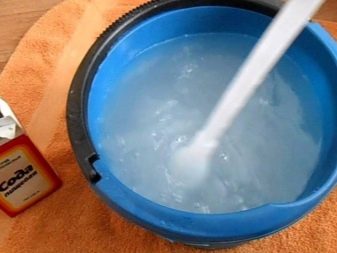

Some fans of aquarium fish use white lime to remove white lime. acetic acid. A small amount is applied to a cotton pad, which wipes the glass. This method, although effective, but dangerous: incompletely washed acid can be fatal to the inhabitants of the aquarium. You need to be extremely careful with her. Firstly, it is possible to carry out actions only with rubber gloves, and secondly, rinse the contact points with the pressure of hot running water for 5-10 minutes.
After the container is washed, it can be dried in the sun or just wiped dry with a towel. This is necessary in order to see the uncleaned areas or the remaining plaque. Fill a clean aquarium with tap water, which needs to be drained in a day.

What to do with accessories and decor?
Absolutely all the components of the aquarium must be thoroughly cleaned and, if necessary, disinfected.
- Priming. It needs to be washed several times, to remove garbage, you can sift too small particles.
- Plants. If the same vegetation is used, then it should be cleaned of plaque and dirt, remove rotten roots and leaves and re-planted in the ground.
- Devices involved in the functioning of the aquasystem. These include: a temperature regulator, a filter, an aerator, a heater, a spray, etc. They should also be removed from plaque and prepared for further work.
Now everything is ready for filling the tank and putting it into operation.
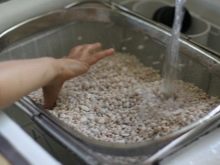

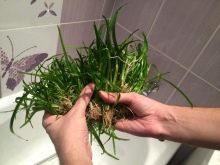
Loading aquarium
First thing soil is laid on the bottom. Then you can fill water. This is done through the very hose with which it merged, only without a funnel. Having poured water to the bottom, it is necessary to level the soil or give it the desired shapeFor example, on one side of the surface to make a recess, and on the other - a hill. Next, so that the stream from the hose does not erode it, you need to substitute a wide plate and continue filling the aquarium.
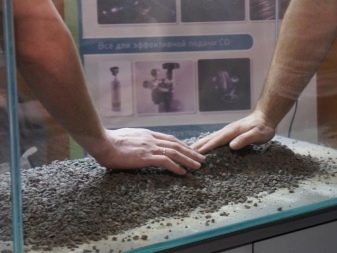
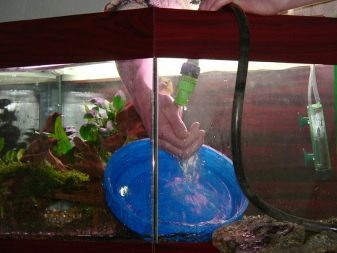
If the water drained from the tank is suitable for use, then it is poured in the first place and topped up with clean, settled. When the fluid level is about half normal, plants should be planted and decor elements installed. Then mount all structures and electrical equipmentextracted from the aquarium.
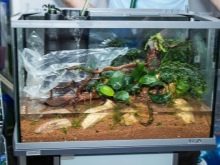
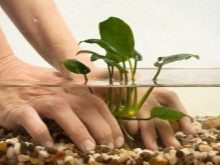
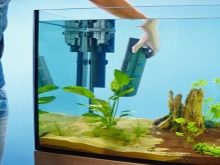
After installing all the units and turning them on, snails and fish can be relocated.. For now, leave the vessel incomplete and carefully monitor the condition of its inhabitants. The next 3 days, add small amounts of added water, gradually bringing to the desired level.
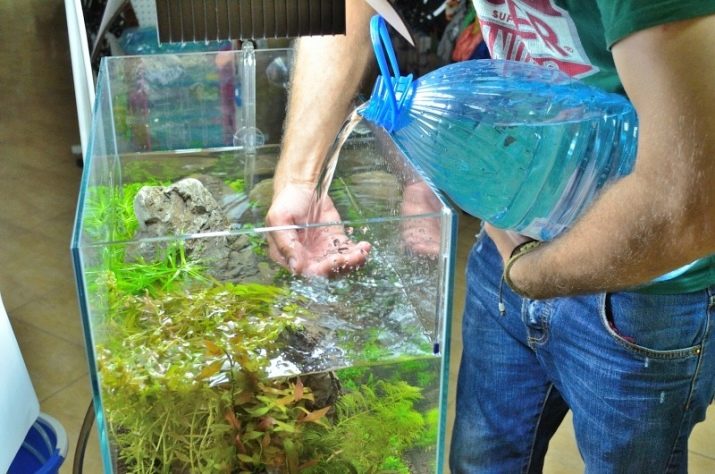
Emergency restart
It will be necessary to restart the aquarium urgently in two cases: a sharp outbreak of the incidence of the inhabitants of the home aquatic system or mechanical damage to the vessel.
In the case when the inhabitants of the aquarium are infected with an infectious disease, they are placed in a separate quarantine jar. Depending on the disease, procedures for their treatment are carried out.
Drained water is never reused. The soil can be saved, but for this it must be thoroughly washed, dried and calcined for half an hour in the oven at a temperature of at least 200 ºС.
The walls of the aquarium are treated with a special disinfectant solution. It is better to get rid of infected plants and acquire new ones. Decor components and technical components are also carefully wiped with a disinfectant. After quarantining, you can start the system.
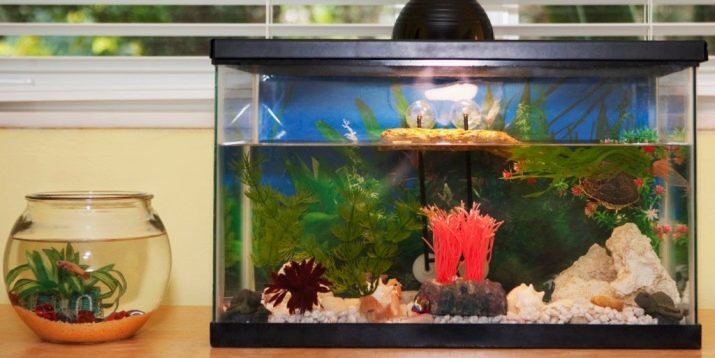
If the glass bursts or the seam is broken, it is necessary to remove all contents from the container as soon as possible, preserving water for overexposure of the fish, if possible, repair the aquarium or buy a new one. Next, perform everything as with a normal reboot.
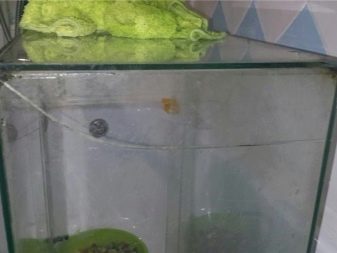
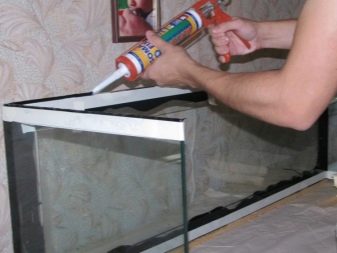
The water is still muddy
In the content of the aquarium, as in any other process, everything is good in moderation. Sometimes the cause of cloudy, green water is hidden in the violation of the natural bacterial balance. If it is not restored, you can restart the aquasystem an infinite number of times, boil the soil and “wash with bleach” the walls of the tank. Going into such extremes is not worth it.
For the transparency of the aquarium and the excellent health of its inhabitants, sterile cleanliness is not needed. It will be enough to find the very ecological balance between the vital activity of fish, plants and bacteria.

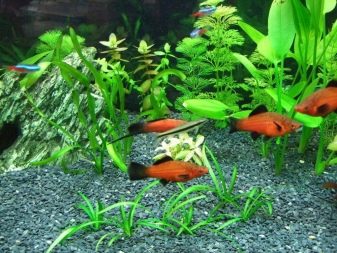
Reasons for re-clouding of water after a restart.
- Complete replacement of water and, as a result, an insufficient number of beneficial microorganisms. Exit: replace 30% of the water from a functioning aquarium to populate and quickly reproduce the desired ecosystem. If there is nowhere to take water, you can buy bacteria in a specialty store. The filter sponge must not be disinfected or boiled; it will be enough to rinse it well in room temperature water.
- Overfeeding fish. If the inhabitants of the aquarium do not eat their food for 10 minutes, it settles to the bottom and begins to decompose. Solution: reduce the dose so that there is no excess food or use feeders, which make it easy to remove residual food.
- Overpopulation of the aquarium. This applies not only to fish, but also to its other inhabitants. Excessive plant vegetation also contributes to turbidity and the appearance of green plaque on the walls. Actions: to relocate part of the fish or aquatic plants in another container or to acquire a larger aquarium.
The transparency of water directly depends on the number of plants and the length of daylight. There should be a lot of vegetation in the aquarium, and lighting will be enough to turn on for 6-7 hours.
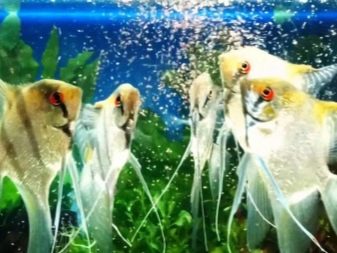
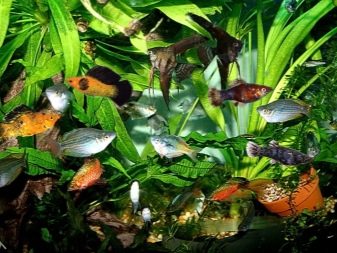
Next, watch a video on how to restart the aquarium.
